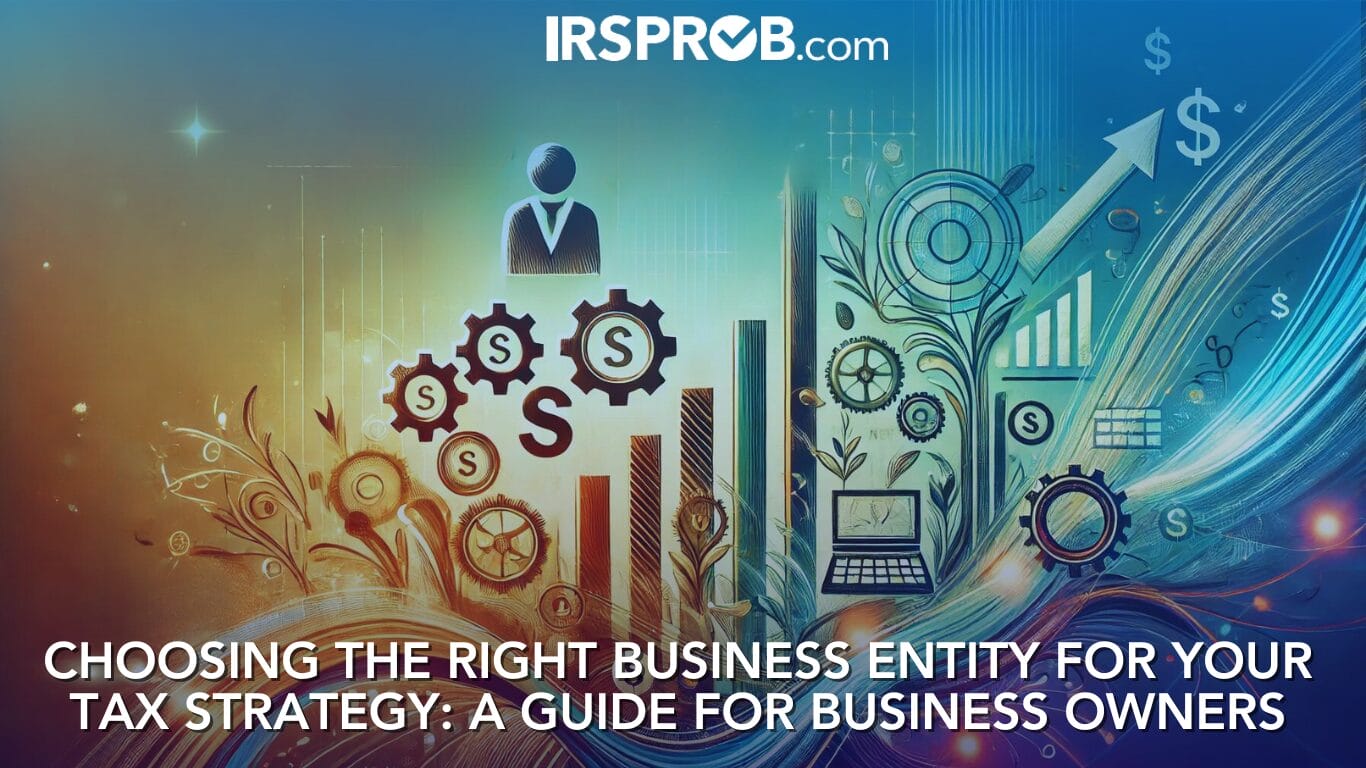
When it comes to structuring your business, the entity you choose can have a profound impact on your tax liabilities, personal liability, and operational flexibility. Whether you’re just starting out or re-evaluating your current structure, understanding the differences between business entities is essential for optimizing your tax strategy and protecting your personal assets. This post will explore the key distinctions between four common types of business entities—Sole Proprietorship, Partnership, S Corporation, and C Corporation—and how they affect business owners, particularly in terms of taxation, liability, and benefits.
Sole Proprietorship: Simplicity with Personal Risk
A sole proprietorship is the simplest and most common type of business entity, particularly for small, owner-operated businesses. In a sole proprietorship, the business and the owner are legally one and the same. While this setup allows for full control over decision-making and direct taxation on profits, it comes with significant risks.
- Taxation: Sole proprietors report business income and expenses on their personal tax returns (Schedule C or Schedule F for farming). The profits are subject to self-employment tax, which includes Social Security and Medicare contributions.
- Liability: Sole proprietors are personally liable for all business debts and legal obligations. This means that personal assets are at risk if the business faces legal challenges or financial difficulties.
- Fringe Benefits: Owners generally cannot take advantage of tax-exempt fringe benefits, except in limited cases (e.g., health insurance for an employee-spouse).
This entity type works best for solo business owners looking for a simple and low-cost setup, but the lack of liability protection can be a concern as the business grows.
Partnership: Shared Ownership, Shared Responsibility
A partnership involves two or more people conducting business together. It is more flexible than a sole proprietorship, allowing for shared ownership, but it also introduces complexities, particularly around profit-sharing and legal liability.
- Taxation: Partnerships file a separate tax return (Form 1065), but the business itself does not pay income tax. Instead, profits and losses “pass through” to the individual partners’ tax returns. General partners are subject to self-employment tax on their share of the profits, whereas limited partners are usually exempt.
- Liability: General partners have unlimited personal liability for the business’s debts and obligations. Limited partners, however, only risk their initial investment.
- Fringe Benefits: Some fringe benefits are available to partners, but these are usually taxable unless specific IRS guidelines are met.
Partnerships offer more flexibility in terms of profit-sharing and capital contributions, but the personal liability for general partners can be a drawback for risk-averse business owners.
S Corporation: Tax Efficiency with Limited Liability
An S Corporation is a corporation that has elected to be taxed as a pass-through entity, meaning the company itself does not pay income tax. Instead, profits and losses pass through to the shareholders, much like a partnership.
- Taxation: S Corporations provide significant tax advantages because shareholders avoid double taxation. Business income passes through to the owners and is taxed at individual rates, avoiding the corporate tax. However, reasonable compensation must be paid to shareholder-employees, and their wages are subject to payroll taxes. Importantly, distributions of profits are not subject to self-employment tax, offering substantial savings for business owners.
- Liability: Shareholders’ liability is limited to their investment in the business, protecting personal assets from business debts and legal obligations.
- Fringe Benefits: Shareholder-employees owning more than 2% of the company may face restrictions on tax-free fringe benefits. However, they are still eligible for some benefits, such as health insurance and group life insurance.
This structure is ideal for small businesses looking to balance tax savings with liability protection, but it comes with stricter compliance requirements, such as shareholder limits and reporting obligations.
C Corporation: Robust Protection but Double Taxation
A C Corporation is a traditional corporate structure where the business is taxed separately from its owners. While this entity type offers the strongest protection for shareholders, it also introduces the issue of double taxation.
- Taxation: C Corporations are subject to corporate income tax, currently at a flat rate of 21%. When profits are distributed as dividends, shareholders must also pay taxes on their personal returns, leading to double taxation. However, C Corporations have the ability to retain earnings for business growth, deferring taxes on those profits.
- Liability: Shareholders are protected from personal liability, with their exposure limited to the amount of their investment.
- Fringe Benefits: C Corporations offer the most generous fringe benefit options, including tax-free health insurance, retirement contributions, and education assistance for employees.
While C Corporations are more complex and costly to operate, they offer unparalleled protection and the ability to scale, making them a popular choice for larger businesses.
Key Considerations for Business Owners
When choosing the right entity for your business, several factors should influence your decision:
- Taxation: If you’re looking to minimize your tax burden, an S Corporation or Partnership may be the best fit due to the pass-through nature of profits and avoidance of double taxation.
- Liability: For businesses with significant risk exposure, an LLC or corporation offers better protection than a sole proprietorship or general partnership.
- Fringe Benefits: If providing comprehensive benefits to employees or yourself is a priority, a C Corporation may be your best bet due to its flexibility and tax advantages for benefits.
Conclusion
Choosing the right business entity is a critical decision that affects your tax obligations, personal liability, and ability to grow your business. While sole proprietorships and partnerships offer simplicity and flexibility, they come with personal risk. S Corporations and C Corporations, on the other hand, provide stronger liability protection but come with more complex tax and compliance requirements.
For most small business owners, the decision often boils down to striking the right balance between tax efficiency and liability protection. Consulting a tax professional to understand the nuances of each structure and how they apply to your specific situation is the best way to ensure long-term success.
For more detailed guidance, the IRS provides publications like IRS Pub. 334 for sole proprietors, IRS Pub. 541 for partnerships, and IRS Pub. 542 for corporations, which outline the rules and regulations governing each business entity.









